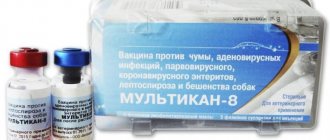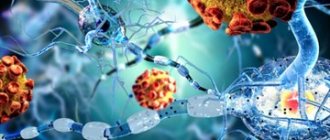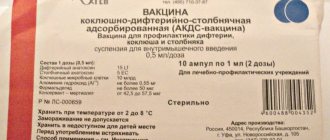One of the most important preventive measures against common diseases in rabbits, both meat and decorative, is vaccination . In this case, vaccinations usually begin after the rabbits are weaned from their mother. It is also necessary to be interested in what vaccines were used for young animals when purchasing animals. Some of the most important vaccinations are against the deadly hemorrhagic disease of rabbits, which is of a viral nature, as well as against rabies in rabbits. They will cost the breeder much less than treatment, which, moreover, almost never leads to successful completion. This article will tell you how often and why it is necessary to carry out systematic vaccination against VGBV when keeping both domestic and decorative rabbits.
When should a rabbit be vaccinated against viral hemorrhagic disease (VHD)?
For the first time, young animals are vaccinated against hemorrhagic disease immediately after weaning from their mother. By this time they usually reach the age of thirty to forty days. For this purpose, a single-component, associated or complex drug can be used. It is necessary to take into account some vaccination rules. Read about vaccinations for decorative rabbits in this article.
Contraindications for use against hemorrhoids
Vaccination against viral hemorrhagic disease, both for decorative and ordinary domestic rabbits, has the following contraindications:
- incubation period of the disease;
- recent pathologies of various types, weakened immunity;
- pregnancy and feeding of rabbits.
The drug should not be used if the integrity of the packaging is damaged or the shelf life has expired. Before use, it is also recommended to examine its appearance for the possible presence of mold. You should purchase the medication only from trusted veterinary pharmacies.
Eared animals that look lethargic, are not eating well, or have signs of disease cannot be vaccinated.
Vaccination is ineffective in the presence of worms in rabbits, as well as in non-compliance with the timing of vaccination and revaccination. It is also useless to use the medication for rabbits that are already sick.
Scheme
As stated above, the first vaccine should be given to young animals within a month and a half after birth. The second, final dose should be taken three months after the first. In addition, revaccination is systematically necessary to maintain the quality of protection against hemorrhagic disease and rabies. It is required to be vaccinated every six months against hemorrhagic disease.

Injections are allowed only in strict sterility among animals that have not yet been sick. If you vaccinate an animal that is in the incubation period of a hemorrhagic disease, it will die in three to four days. Therefore, a thorough preliminary examination of rabbits is also important. Also, you should not vaccinate if your rabbit has diarrhea.
How to treat diarrhea in rabbits, read this link.
If vaccination against myxomatosis is planned during the same period, vaccination with the drug against VGBV must be done either ten days before, or two weeks after.
Features of aluminum hydroxide tissue vaccine
VHDV is an aluminum hydroxide tissue vaccine designed to prevent rabbits from contracting the deadly viral hemorrhagic disease. Available in the form of a white or pinkish suspension in darkened sterile glass bottles with a volume of ten to two hundred milliliters. A small amount of sediment is allowed when the bottles are at rest. The kit includes instructions for use with dosage.
After the first administration of the drug, immunity in rabbits is developed within three days. The effect of vaccination lasts for twelve months.
Read about the treatment of pasteurellosis in rabbits in this material.
Lack of appetite in rabbits on the second day after vaccination is normal. However, if it continues for more than two days, you should contact your veterinarian.
What is the combined vaccine VGBV and rabbit myxomatosis?
A combination vaccine is a drug that can provide protection against several diseases at once. Thus, a complex vaccine against myxomatosis and VGBV is often used. The drug is used for intramuscular, intravenous and subcutaneous administration. After vaccination, immunity against myxomatosis and VGBV is formed within two to three days, and the effect lasts for a year. However, revaccination is recommended every six months.
The complex drug is sold through veterinary pharmacy chains in boxes containing two ampoules. You will need to mix their contents with each other only before giving the injections. Using the drug, you can vaccinate pregnant rabbits in the early stages; vaccination among lactating females is not recommended.
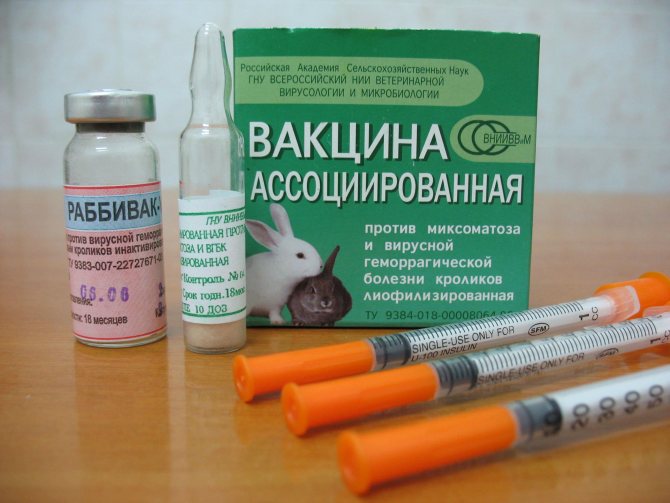
The VGBV vaccine is valid for 12 months. Price from 360 rub.
The use of combined injections is very convenient and profitable. However, it is important to strictly adhere to the dosage so as not to worsen the situation and prevent the death of the rabbits. In addition, before administration, it is necessary to take into account the state of the animal’s immunity and conduct an examination for the possible presence of pathologies.
Description
The main cause of the disease is an RNA virus. This virus has a high degree of infection. The lifespan of the virus is up to 5 years. Characterized by resistance to aggressive influences of ethers, chlorine and low temperatures.
Important! The pathogen negatively affects only rabbits. It is transmitted instantly from individuals, but does not affect other animals.
The virus is transmitted through the air, as well as through nutrition. Outbreaks can occur at certain times of the year. The new form of hemorrhagic disease in rabbits develops more rapidly; many individuals, being charged, do not show symptoms.
Viral hemorrhagic disease of rabbits is transmitted by sick animals from the first day of infection, as well as by individuals who were ill and survived. A person who comes into contact with the virus will not get sick, but can become a carrier.
Routes of infection:
- Feed.
- The soil.
- Water.
- Manure.
- Litter in cages.
- Fur and down of an infected rabbit, including in the finished product.
- Shoes.
- Various equipment used in caring for rabbits.
- Blood-sucking insects, birds, rodents.
The virus that gets on your hands and clothes will be active for a long time. From the soil it gets onto car wheels and shoe soles.
Infected animals under three months of age do not survive. The disease affects rabbits at any age and is always life-threatening.
It is difficult to protect your farm from the virus. Death at temperatures above 60°C occurs after 10 minutes. The skin will keep the virus viable for three months. Thus, the risk of transmitting the disease arises even when visiting another farm.
Vaccination doses against the disease
It is best to carry out vaccination in a veterinary clinic or at home under the supervision of a doctor. However, if you follow the necessary rules, it is possible to vaccinate yourself, but only after consulting a veterinarian.
Young animals and adults are usually prescribed half a milliliter per head. For this, sterile syringes and needles are used, injections are placed intramuscularly in the thigh or withers, after preliminary fixation of the rabbit. It is recommended to use someone else’s help when administering the vaccination yourself, so that you can give the injection faster and more accurately.
It is not recommended to store an opened package of vaccine, no matter the vaccine against coccidiosis, pasteurellosis or hemorrhagic disease. The shelf life of a suspension diluted with distilled water is no more than three days.
Read about breeding and caring for Karmaly piglets here.
Immediately after vaccination, it is recommended to quarantine the rabbits for three to five days. During this period, it is important to monitor their well-being and health status.
Symptoms
Signs of the disease in rabbits depend on the form of the disease. Experts divide the course of the disease into:
- Spicy.
- Super sharp.
Symptoms of VGBV in rabbits are specific depending on the form.
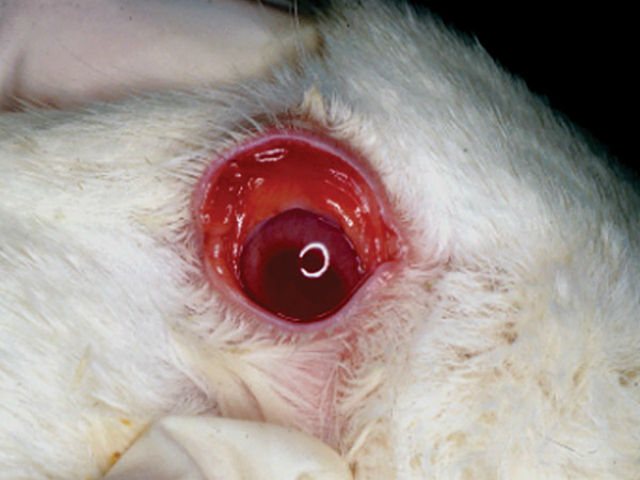
In the acute form, it is recommended to pay attention to the first manifestations. The first symptoms of VGB include:
- A sharp increase in temperature.
- Lethargic behavior.
- Refusal to eat.
- Respiratory tract damage.
- Intestinal disorder.
- Problems with stool, namely loose stool.
The acute form is less common. Most often, rabbits are affected by a hemorrhagic virus in a hyperacute form. Diagnosis is difficult. The disease remains undetected for a long time. During this period, the virus manages to spread greatly among the farm animals. The disease does not manifest itself from several hours to several days.
A hyperacute course without symptoms provokes danger for all individuals. The infected rabbit continues to lead its usual lifestyle, eats, and the body temperature is not elevated.
The death comes as a surprise. Before the rabbit dies, it suffers several convulsions. Then he suddenly dies.
External symptoms of VGBV help determine the type of disease. Throughout exposure to the virus, pathological changes in internal organs occur. It is difficult even for an experienced breeder to notice disturbances in the functioning of internal organs. It is these violations that cause death.
How the virus works:
- Once in the body of a rabbit, it begins to multiply instantly.
- With sufficient distribution, it enters the circulatory system and is transported throughout the body.
- Enters the lymphatic system.
- Poisonous and toxic substances are produced.
- Affects internal organs with a vascular structure.
- Disturbs the interconnection of the cellular system.
- As the disease progresses, nodular formations under the skin become noticeable.
- Blood appears in the eyes.
- Towards the end of the disease, the rabbit begins to vomit blood with the addition of blood, anus, and nose.
- The liver, kidneys, and lungs increase in size.
- Blood flow worsens, the heart slows down.
- The spleen fills with blood.
Blood from the nose is often mixed with mucus and pus. In some individuals, blood discharge occurs only from the nose. Bloody discharge is not necessary.
Therefore, if the corpse of a rabbit is noticed, it must be urgently sent to the laboratory. Timely detection of a hemorrhagic virus will avoid the death of the family.
conclusions
- The best method that can protect rabbits from hemorrhagic disease (“hemorrhagic disease”) is vaccination.
- You can vaccinate rabbits against VGBV yourself, but it is recommended to consult a veterinarian first.
- It is important to ensure sterility during vaccination.
- The use of the vaccine for animals with weakened immune systems is fraught with the death of rabbits. When pregnant and lactating rabbits are vaccinated, the virus can be transmitted to the rabbits.
- For vaccination, you can use both single-component and complex prophylactic drugs.
Read about vaccinating chickens at home here.
Who is susceptible to VGBV?
One good thing about this disease is that only hares and rabbits are susceptible to it. Other pets and people are not susceptible to the VGBV virus.
Is it possible to eat the meat of rabbits that have died or are suspected of having VGBV? According to the rules - it is impossible. Animal carcasses must be disposed of (burned with skins, not thrown away raw). But in practice, the meat of dead rabbits is often well boiled and fed to domestic animals. The meat of “doubtful” rabbits (for example, from the same cage as the dead one, or from neighboring ones) is subject to long-term heat treatment and eaten (stewed meat). In both cases, the by-products are destroyed.
As for the susceptibility of the rabbits themselves to hemorrhoids, much depends on whether they are vaccinated, what age they have and what kind of immunity they have.
Since babies receive immunity from their mother (with colostrum, milk), they are considered immune to the virus until weaning (1-1.5 months). The most vulnerable group are adult rabbits (from three months), primarily female rabbits. Quite often, it is pregnant females who become ill with hemorrhagic disease. Adult males are in second place in terms of vulnerability to VGBV. The most well-fed, most hopeful rabbits are dying.

